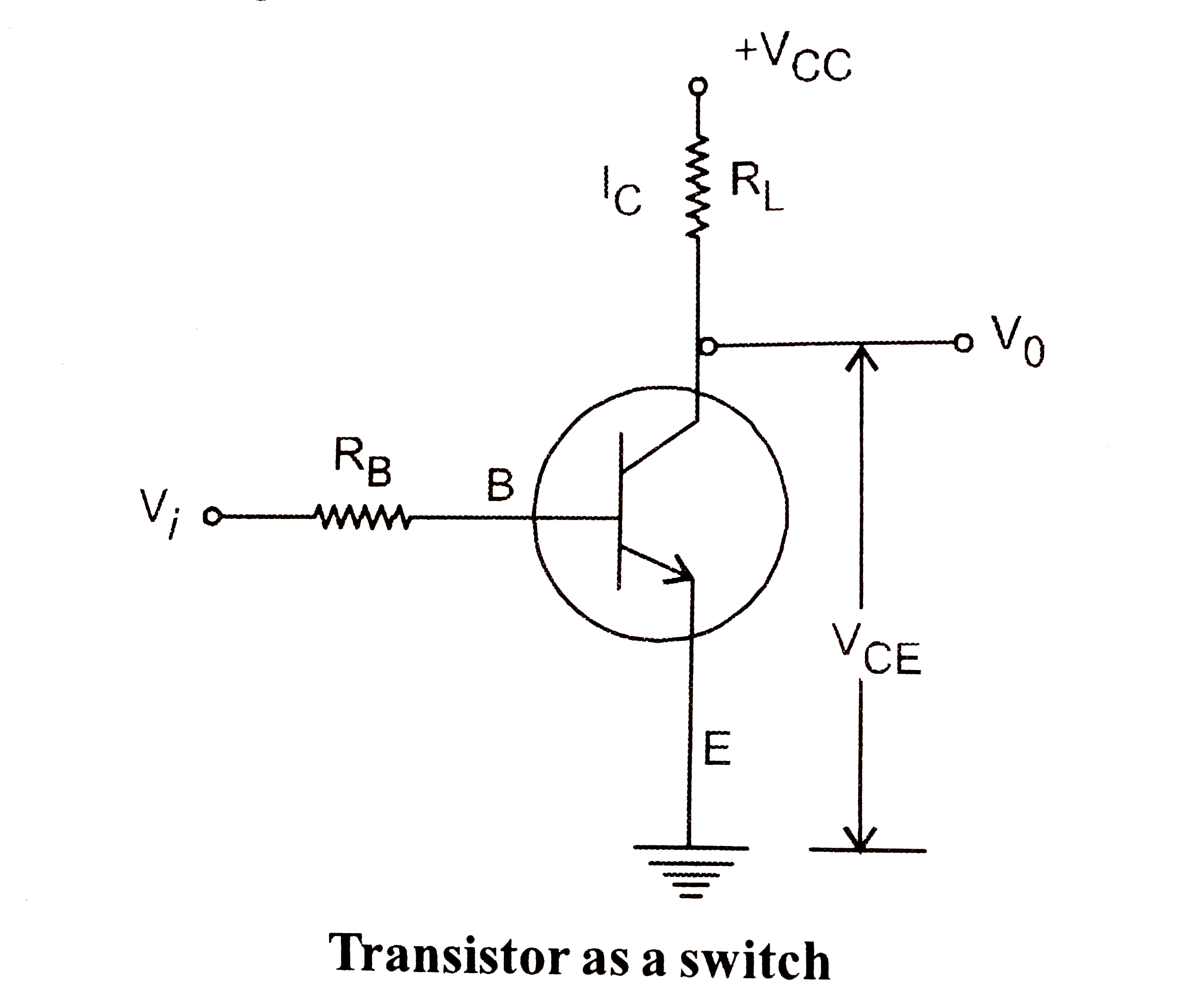Explain the working of a transistor as a switch.
Video Solution
Text Solution
Transistor as a switch : Both the n-p-n and p-n-p bipolar transistors can be made to operate as an "ON/OFF" type solid state switch for controlling high power devices such as motors, lamps. When transistor is operated in cut off region o saturation region, it works as a switch. The circuit for transistor as a switch is shown in the following figure :

On applying Kirchhoff's voltage law to output part,
VCC=ICRL+VCE
or VCE=VCC−ICRL
When VL=0,IB=0 and hence, IC=0.
∴VCE=VCC (source voltage)
That is, when Vi=0, no current flow through transistor and load RL. Entire voltage develops across transistor (VCE=VCC). This condition is similar to open switch (i.e, IC=0,V0=VCC= source voltage)
When Vi is positive and greater than 0.7V the base current flows that forces transistor into saturation and large current flows through transistor and load RL. The entire source voltage gets developed across the load RL and very low voltage drops across transistor (VCE=0.2)
This condition is similar to closed switch.
(i.e, IC=VCCRL , and V0=VCE=0.2V).
The main idea is that, load RL is connected or disconnected from the source VCC by transistor switch without any make or brake of circuit.
|
Topper's Solved these Questions
- JULY 2018BOOK - GURUKUL PUBLICATION - MAHARASHTRA PREVIOUS YEAR PAPERSCHAPTER - JULY 2018EXERCISE - SECTION-II
21 Videos
- JULY 2017BOOK - GURUKUL PUBLICATION - MAHARASHTRA PREVIOUS YEAR PAPERSCHAPTER - JULY 2017EXERCISE - SECTION-I
12 Videos
- MARCH 2015BOOK - GURUKUL PUBLICATION - MAHARASHTRA PREVIOUS YEAR PAPERSCHAPTER - MARCH 2015EXERCISE - SECTION-II
21 Videos
Similar Questions
Explain the working of transistor as an oscillator using a labelled circuit diagram.
View SolutionExplain the working of LED.
View SolutionWorking on transistors
View SolutionExplain the working of a barometer.
View SolutionExplain the working of seismograph.
View SolutionExplain, how a CE transistor acts as a switch.
View SolutionExplain the working of hurricane lamp ?
View SolutionExplain the working of hurricane lamp ?
View SolutionExplain the working of optical fibers.
View SolutionState two advantages and two uses of a transistor as a switch.
View Solution
